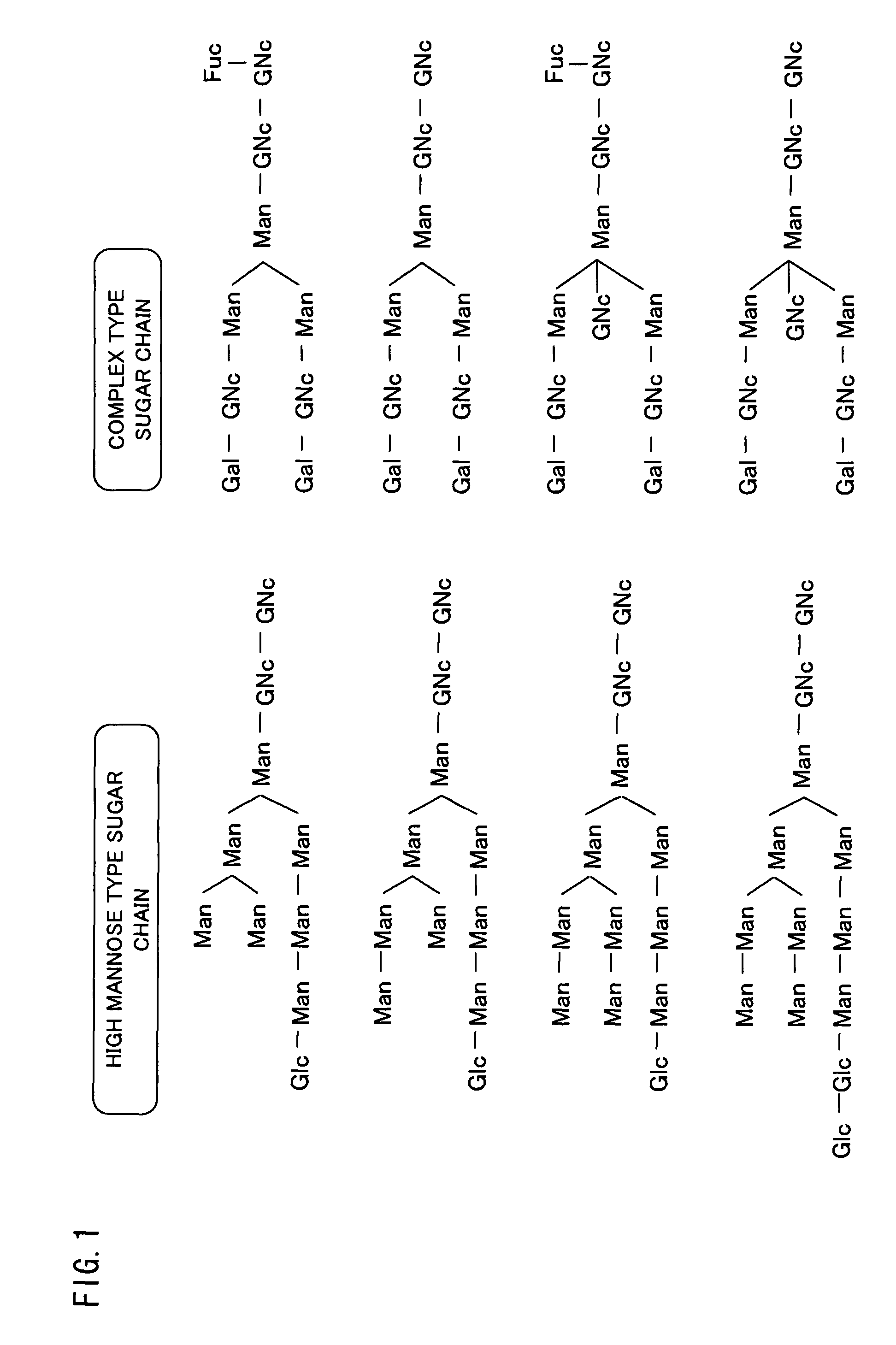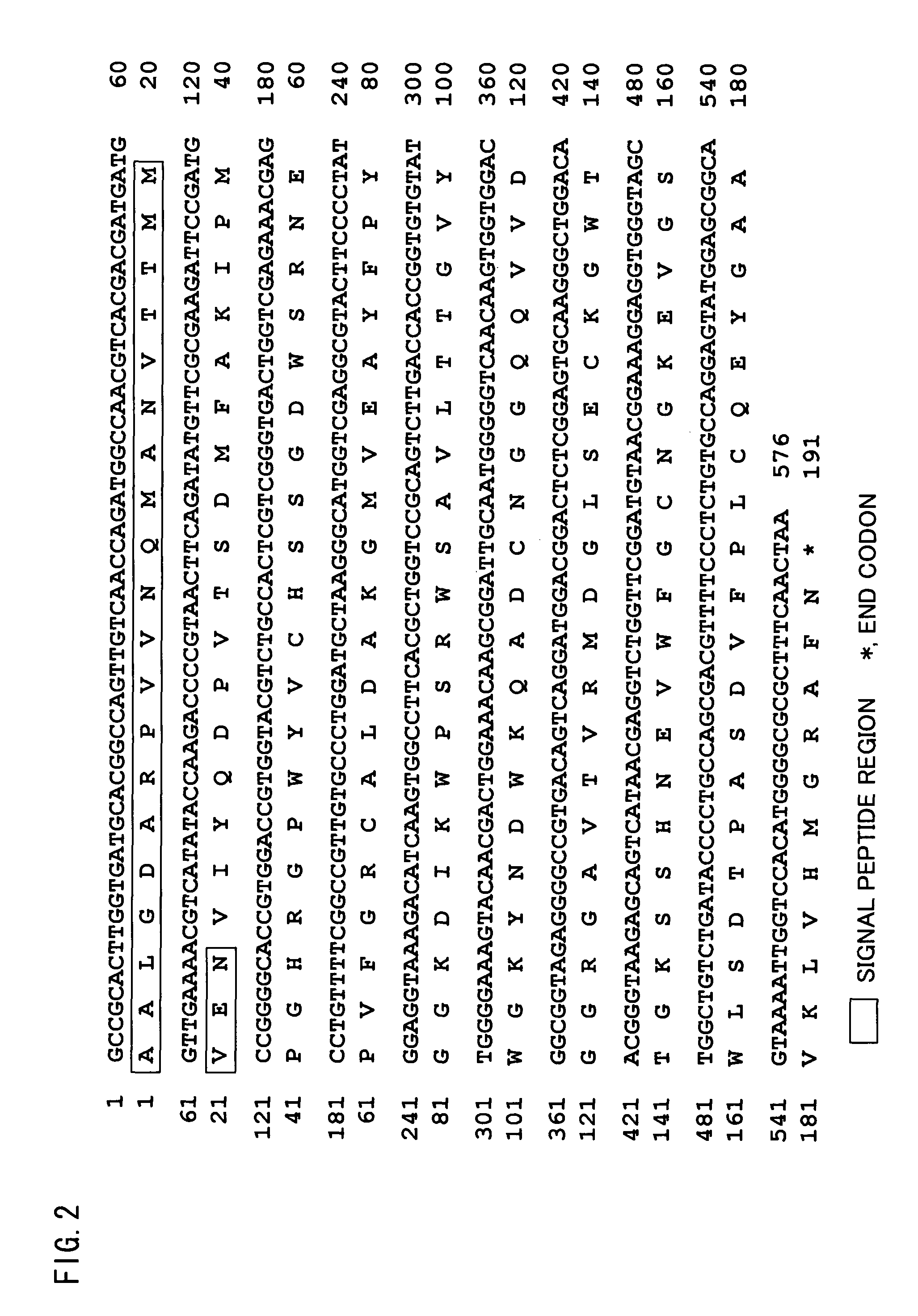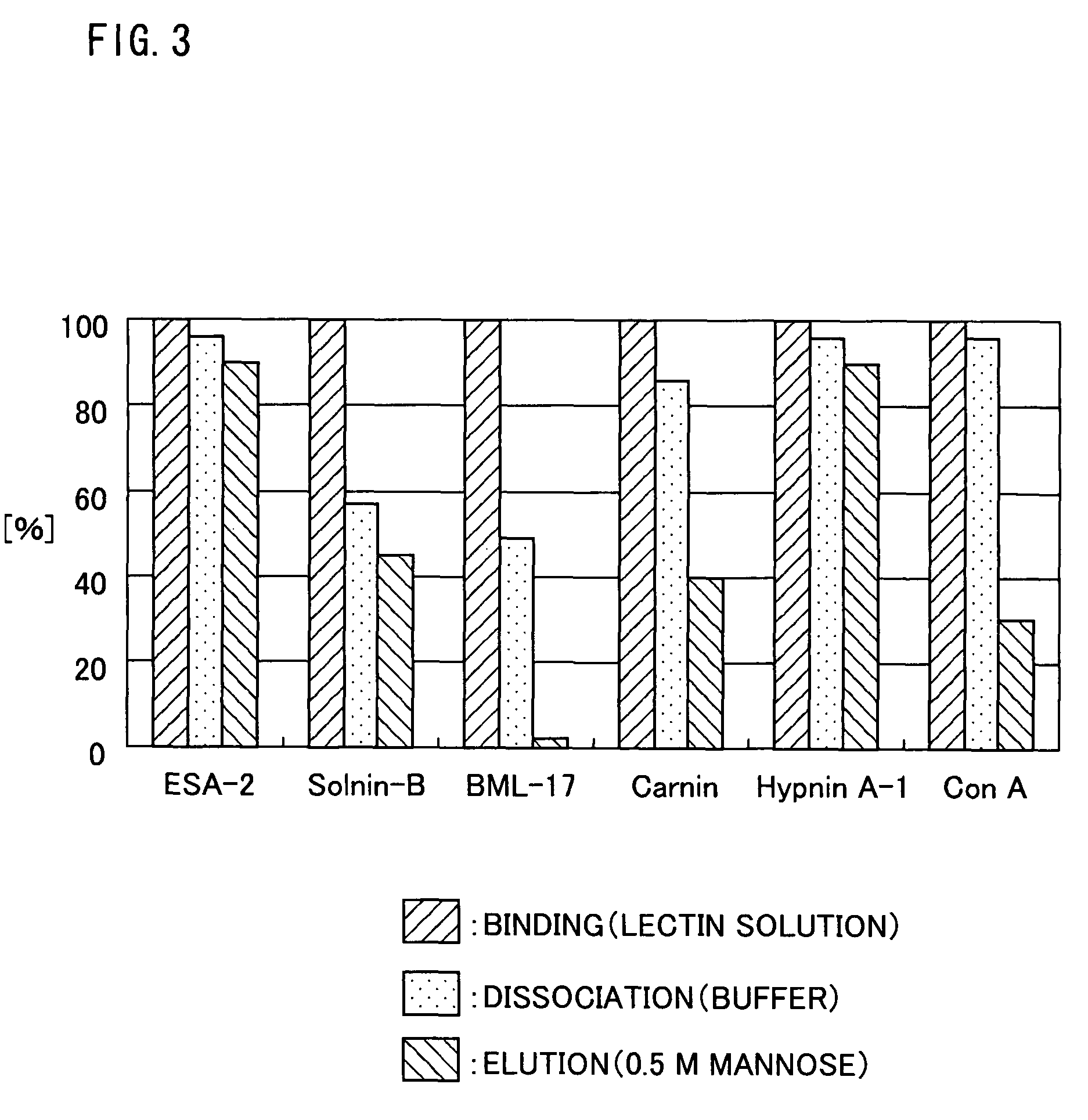Isolated polypeptide binding to a sugar chain, polynucleotide encoding the polypeptide and use of the polypeptide and polynucleotide
a technology of sugar chain and isolating polypeptide, which is applied in the field of new molecules, can solve the problems of difficult to achieve with mice and rats, difficult to produce antibodies against the pathogenic prion protein that causes creutzfeldt-jakob disease or mad cow disease in mammals, and the inability to use the method intended for mammals directly
- Summary
- Abstract
- Description
- Claims
- Application Information
AI Technical Summary
Benefits of technology
Problems solved by technology
Method used
Image
Examples
example 1
Isolation of Polypeptide (BML-17) from Algae (Bryopsis maxima)
[0185](Preparation of Extracts and Ammonium Sulfate Precipitation)
[0186]To 12.2 g of a freeze-dried powder of Bryopsis maxima was added 200 ml of 20 mM PBSA (phosphate-buffered saline containing 0.2% sodium azide, pH 7.0). The mixture was stirred overnight at 4° C., and this was followed by centrifugation to obtain an extract solution. The procedure was repeated 3 times to obtain extract solutions 1 to 3.
[0187]An ammonium sulfate powder was then slowly added to each extract solution to a 20% saturation, and the mixture was allowed to stand overnight at 4° C. The precipitate obtained by centrifugation (10,000 rpm, 30 minutes) was dissolved in PBSA, and was sufficiently dialyzed with the solvent. After dialysis, the internal solution was centrifuged and the resulting supernatant was obtained as a 20%-saturated ammonium sulfate-precipitate fraction. The supernatant obtained by the precipitation procedure with a 20%-saturated...
example 2
Cloning of BML-17 cDNA
[0228]cDNA of BML-17 was cloned from cDNA library according to the following procedure. Unless otherwise noted, the procedure was performed under standard conditions. Where applicable, various kinds of kits were used according to the procedures described in the manuals attached to the kits.
[0229]Total RNA was extracted from Bryopsis maxima culture using AGPC method (Acid Guanidiumu-Phenol-Chloroform method), and mRNA was purified with Oligotex™-dt30 mRNA Purification Kit (TAKARA BIO INC.).
[0230]Then, double stranded cDNA was synthesized using RT-PCR and was introduced into plasmid vector pBSK(+) / E / N (STRATAGENE). The plasmid vector was then introduced into competent cells (E. coli DH10B) with ElectroMaxDH10B (GIBCO BRL) to construct cDNA library.
[0231]Next, degenerate primers were designed based on information of amino acid sequences in the N-terminal region of BML-17. Degenerate primer SP1-17 was designed based on the amino acid sequence (DMFAKIPMPGH: SEQ ID N...
example 3
Search for Lectins that Bind to Chicken Egg Yolk Antibody (Chicken IgY Antibody)
[0239](Test Lectins)
[0240]Algae-(seaweed)-derived lectins: Eucheuma serra-derived lectin ESA-2 (see Kawakubo, A., Makino, H., Ohnishi, J., Hirohara, H. and Hori, K.: The marine red alga Eucheuma serra J. Agardh, a high yielding source of two isolectins. J. Appl. Phycol., 9, 331-338 (1997)), Solieria robusta-derived lectin Solnin B (see Hori, K., Ikegami, S., Miyazawa, K. and Ito, K.: Mitogenic and antineoplastic isoagglutinins from the red alga Solieria robusta. Phytochemistry, 27, 2063-2067 (1988)), Boodlea coacta-derived lectin BCL (see Hori, K., Miyazawa, K., and Ito, K.: Isolation and characterization of glycoconjugate-specific isoagglutinins from a marine green alga Boodlea coacta (Dickie) Murray et De Toni. Bot. Mar., 29, 323-328 (1986)), Carpopeltis flabellata-derived lectin Carnin (see Hori, K., Matsuda, H., Miyazawa, K. and Ito, K.: A mitogenic agglutinin from the red alga Carpopeltis flabellata...
PUM
| Property | Measurement | Unit |
|---|---|---|
| pH | aaaaa | aaaaa |
| pH | aaaaa | aaaaa |
| pressure | aaaaa | aaaaa |
Abstract
Description
Claims
Application Information
 Login to View More
Login to View More - R&D
- Intellectual Property
- Life Sciences
- Materials
- Tech Scout
- Unparalleled Data Quality
- Higher Quality Content
- 60% Fewer Hallucinations
Browse by: Latest US Patents, China's latest patents, Technical Efficacy Thesaurus, Application Domain, Technology Topic, Popular Technical Reports.
© 2025 PatSnap. All rights reserved.Legal|Privacy policy|Modern Slavery Act Transparency Statement|Sitemap|About US| Contact US: help@patsnap.com



